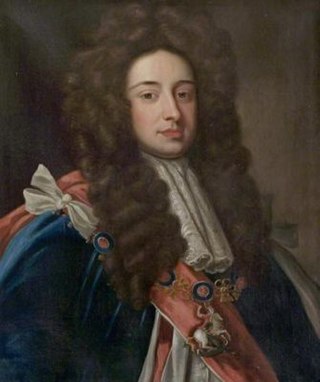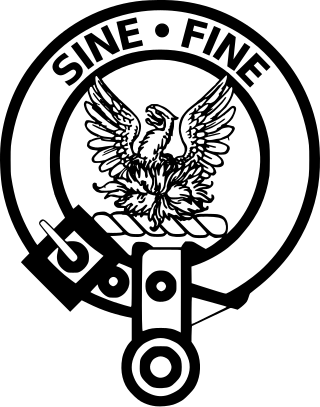Related Research Articles

A trust is a legal relationship in which the owner of property, or any transferable right, gives it to another to manage and use solely for the benefit of a designated person. In the English common law, the party who entrusts the property is known as the "settlor", the party to whom it is entrusted is known as the "trustee", the party for whose benefit the property is entrusted is known as the "beneficiary", and the entrusted property is known as the "corpus" or "trust property". A testamentary trust is an irrevocable trust established and funded pursuant to the terms of a deceased person's will. An inter vivos trust is a trust created during the settlor's life.

A will and testament is a legal document that expresses a person's (testator) wishes as to how their property (estate) is to be distributed after their death and as to which person (executor) is to manage the property until its final distribution. For the distribution (devolution) of property not determined by a will, see inheritance and intestacy.
In English common law, fee tail or entail is a form of trust, established by deed or settlement, that restricts the sale or inheritance of an estate in real property and prevents that property from being sold, devised by will, or otherwise alienated by the tenant-in-possession, and instead causes it to pass automatically, by operation of law, to an heir determined by the settlement deed. The terms fee tail and tailzie are from Medieval Latin feodum talliatum, which means "cut(-short) fee". Fee tail deeds are in contrast to "fee simple" deeds, possessors of which have an unrestricted title to the property, and are empowered to bequeath or dispose of it as they wish. Equivalent legal concepts exist or formerly existed in many other European countries and elsewhere; in Scots law tailzie was codified in the Entail Act 1685.

John Hervey, 1st Earl of Bristol was an English Whig politician.

Vice-Admiral Thomas Butler, 6th Earl of Ossory, KG, PC, PC (Ire) was an Irish soldier and politician. He was the eldest son of James Butler, 1st Duke of Ormond but predeceased his father and therefore never succeeded as duke.
In common law, an estate is a living or deceased person's net worth. It is the sum of a person's assets – the legal rights, interests, and entitlements to property of any kind – less all liabilities at a given time. The issue is of special legal significance on a question of bankruptcy and death of the person.

In common law jurisdictions, probate is the judicial process whereby a will is "proved" in a court of law and accepted as a valid public document that is the true last testament of the deceased; or whereby, in the absence of a legal will, the estate is settled according to the laws of intestacy that apply in the jurisdiction where the deceased resided at the time of their death.

Estate planning is the process of anticipating and arranging for the management and disposal of a person's estate during the person's life in preparation for future incapacity or death. The planning includes the bequest of assets to heirs, loved ones, and/or charity, and may include minimizing gift, estate, and generation-skipping transfer taxes. Estate planning includes planning for incapacity, reducing or eliminating uncertainties over the administration of a probate, and maximizing the value of the estate by reducing taxes and other expenses. The ultimate goal of estate planning can only be determined by the specific goals of the estate owner, and may be as simple or complex as the owner's wishes and needs directs. Guardians are often designated for minor children and beneficiaries with incapacity.
Joint wills and mutual wills are closely related terms used in the law of wills to describe two types of testamentary writing that may be executed by a married couple to ensure that their property is disposed of identically. Neither should be confused with mirror wills which means two separate, identical wills, which may or may not also be mutual wills.

John Holles, 1st Duke of Newcastle was an English peer and politician.
In trust law, a settlor is a person who settles their property for the benefit of the beneficiary. In some legal systems, a settlor is also referred to as a trustor, or occasionally, a grantor or donor. Where the trust is a testamentary trust, the settlor is usually referred to as the testator. The settlor may also be the trustee of the trust or a third party may be the trustee. In the common law of England and Wales, it has been held, controversially, that where a trustee declares an intention to transfer trust property to a trust of which he is one of several trustees, that is a valid settlement notwithstanding the property is not vested in the other trustees.

Sutton Place, 3 miles (4.8 km) north-east of Guildford in Surrey, is a large Grade I listed Tudor prodigy house built c. 1525 by Sir Richard Weston, a courtier of Henry VIII.

Clan Makgill is a Lowland Scottish clan.

English trust law concerns the protection of assets, usually when they are held by one party for another's benefit. Trusts were a creation of the English law of property and obligations, and share a subsequent history with countries across the Commonwealth and the United States. Trusts developed when claimants in property disputes were dissatisfied with the common law courts and petitioned the King for a just and equitable result. On the King's behalf, the Lord Chancellor developed a parallel justice system in the Court of Chancery, commonly referred as equity. Historically, trusts have mostly been used where people have left money in a will, or created family settlements, charities, or some types of business venture. After the Judicature Act 1873, England's courts of equity and common law were merged, and equitable principles took precedence. Today, trusts play an important role in financial investment, especially in unit trusts and in pension trusts. Although people are generally free to set the terms of trusts in any way they like, there is a growing body of legislation to protect beneficiaries or regulate the trust relationship, including the Trustee Act 1925, Trustee Investments Act 1961, Recognition of Trusts Act 1987, Financial Services and Markets Act 2000, Trustee Act 2000, Pensions Act 1995, Pensions Act 2004 and Charities Act 2011.

Judith Quiney, née Shakespeare, was the younger daughter of William Shakespeare and Anne Hathaway and the fraternal twin of their only son Hamnet Shakespeare. She married Thomas Quiney, a vintner of Stratford-upon-Avon. The circumstances of the marriage, including Quiney's misconduct, may have prompted the rewriting of Shakespeare's will. Thomas was struck out, while Judith's inheritance was attached with provisions to safeguard it from her husband. The bulk of Shakespeare's estate was left, in an elaborate fee tail, to his elder daughter Susanna and her male heirs.

Lissan House is a historic house and tourist attraction in County Tyrone, Northern Ireland, that was the seat of the Staples baronets. Lissan lies nestled at the foot of the Sperrin Mountains amid ancient woodland near the historic market town of Cookstown.
Sir William Talbot, 1st Baronet, was an Irish lawyer and politician. He sat as MP for County Kildare in the Parliament of 1613–1615 and was in 1628 one of the negotiators of the Graces. However, he is probably mainly remembered as the father of Richard Talbot, 1st Earl of Tyrconnell.

Binions v Evans[1972] EWCA Civ 6 is an English land law and English trusts law case, concerning a constructive trust of land which will often be irrevocable whilst the occupier is in occupation as opposed to a licence to occupy — and/or a tenancy at will which is similar save that without transfer of the underlying property it can be revoked without cause. The case hinged on the fact there was an agreement specifying the existing occupier was to remain.
Sir Henry Wood, 1st Baronet was an English courtier and politician who sat in the House of Commons from 1661 to 1671.

Sir James Chatterton, 1st Baronet, was an Irish lawyer and politician, and the first of the Chatterton Baronets of Castle Mahon.